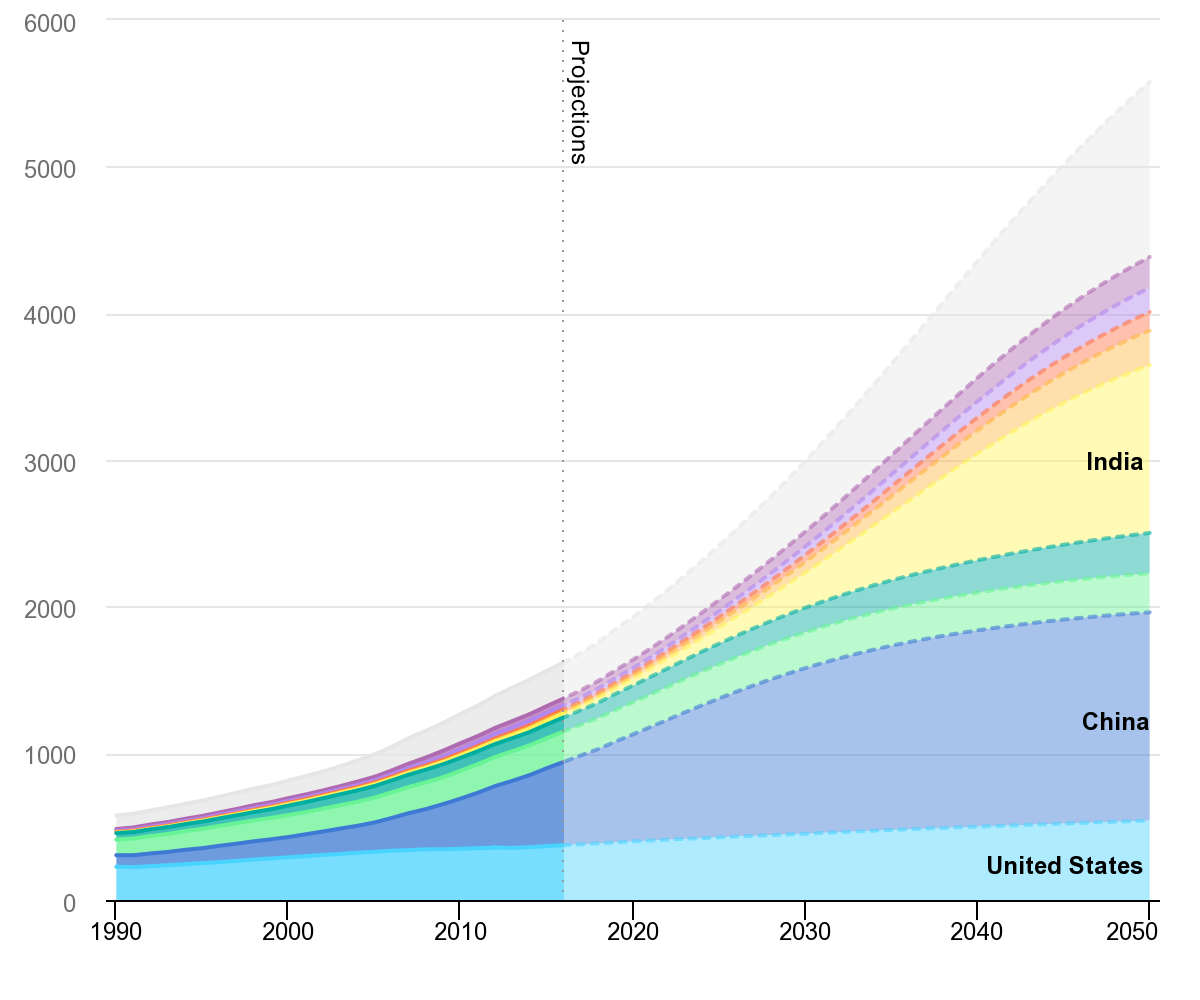Written by Ryan McGuine //
Cooling enables many things that are taken for granted in modern life, including keeping indoor spaces comfortable, and preserving food and medicine. Refrigeration works by boiling a refrigerant to remove heat from a space and condensing it to dump the heat outside, a cycle which needs a high rate of energy. Cooling requires a power density of around 28 W/m² of floor space for residential buildings and up to 190 W/m² for cold storage (for comparison, modern solar panels convert radiation into electricity at only 5-20 W/m² of panel area). Cooling is linked to a number of the Sustainable Development Goals, including SDG2 “Zero Hunger,” SDG3 “Good Health & Well-Being,” SDG4 “Quality Education,” SDG8 “Decent Work,” and SDG13 “Climate Action.”
Air conditioning (AC) is used to keep all manner of spaces cool, including data storage centers, residential and commercial buildings, and transportation stations. AC accounts for roughly 10% of all global electricity consumption, and yet most homes in developing countries have no AC today. As temperatures get warmer and incomes rise, AC will be the fastest-growing energy use by buildings — nearly two-thirds of households might have AC by 2050, with growth projected to be highest in China and India. Singapore’s first prime minister Lee Kuan Yew once remarked that AC “changed the nature of civilization by making development possible in the tropics.” Indeed, AC boosts workers’ productivity, improves students’ learning, and saves lives in hot climates.
Global Air Conditioner Stock [million units]

The other major role cooling plays in modern life is logistics. Food and medicine are shipped around the world via “cold chains” of sequential refrigerated transportation and storage. For food, this includes freezing operations at food plants, “reefer” shipping containers, and refrigerated display cases at supermarkets. The ability to keep food cold from farm to fork helps reduce food waste, which is responsible for roughly 6% of global greenhouse gas emissions. Cooling also plays a critical role keeping medicine safe on its journey from manufacturing facilities to community health centers. Higher vaccination rates around the world has been a contributing factor in better health outcomes globally, but there are still places without access to cold chains for medicine, suggesting this use will continue to grow.
Unfortunately, the expansion of refrigeration comes at a great environmental cost, particularly concerning the climate. First, refrigeration is a very energy-intensive process. The electricity to run AC units currently produces 12% of global carbon emissions, and AC is on pace to add the equivalent of 1,000 average-sized (500 MW) power generating stations of electricity by 2050. Where that power comes from will determine its climate impacts. Second, many common refrigerants like hydrofluorocarbons (HFCs) are global ambient air pollutants with very high global warming potentials. While humans emit over 36 billion tons of carbon dioxide and just 850m tons of HFCs annually, HFCs are 1,000-9,000 times more effective at trapping heat than carbon dioxide.
One way to mitigate cooling-related climate effects is to adopt minimum energy efficiency standards for cooling systems. The most efficient AC units are roughly twice as efficient as average units, resulting in far less electricity consumption for the same cooling capacity. Additionally, countries should ban refrigerants with very high global warming potentials. The Kigali Amendment to the Montreal Protocol sets a schedule to phase many out, but the generous timeframe combined with the fact that most AC units are used for over a decade, means that it could be 2038 before its full effects come into force.
Space Cooling Energy Demand Growth [TW-h]

There is also an array of policies that are not directly related to cooling, but which would help reduce cooling-related emissions. For example, designing buildings to minimize the artificial heating and cooling needed would be an important step. Building codes and standards should include things that increase overall energy efficiency like taking advantage of natural heating and cooling, reducing heat loss from building envelopes, and optimizing climate control systems. Further, widespread electrification will push up electricity demand in coming decades, so the case for policies to boost low-carbon electricity generation is hard to overstate.
Cooling is often overlooked in discussions of climate change, to the planet’s detriment. India’s Prime Minister Modi has ambitious plans to install 100 GW of solar generation, but meeting new cooling demand there with the most efficient devices and banning HFCs would reduce greenhouse gases more by 2050. In China, that combination would offset eight Three Gorges dams worth of carbon emissions. Efficient AC units are only slightly more expensive than average units today, and alternatives to HFCs already exist. Smart actions can increase the demand for each, making them even cheaper and more widely available going forward. It is possible to stay cool without warming the planet.
